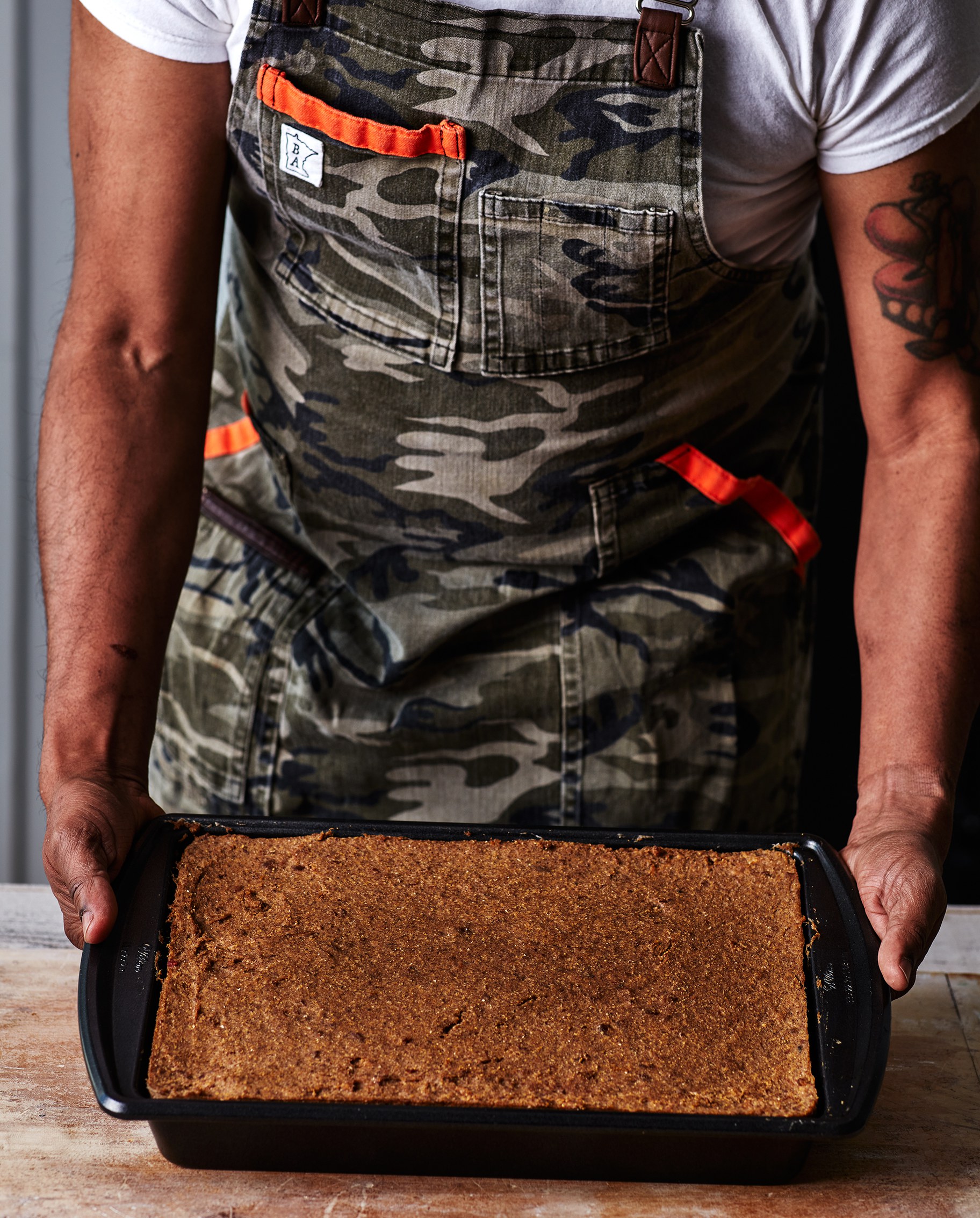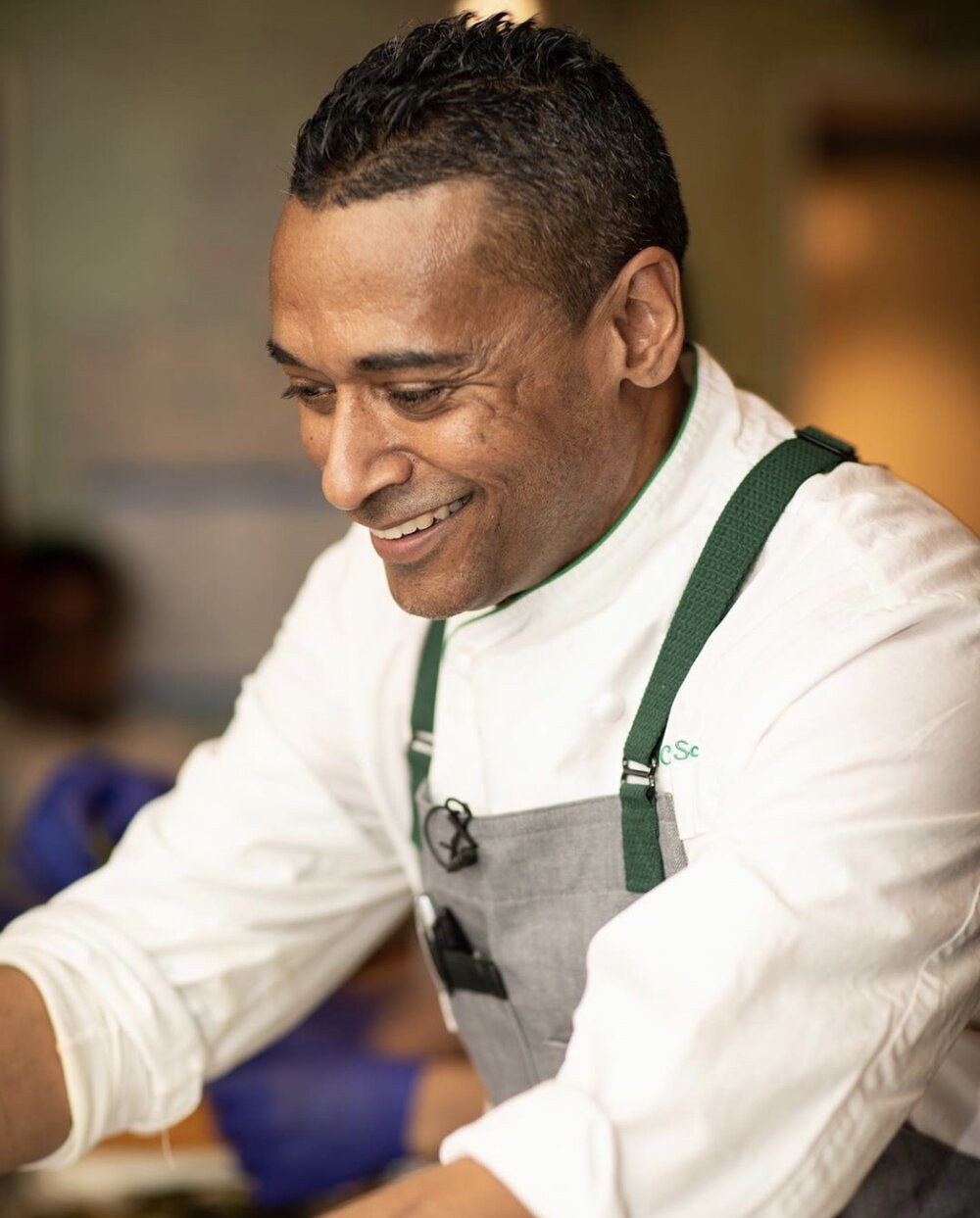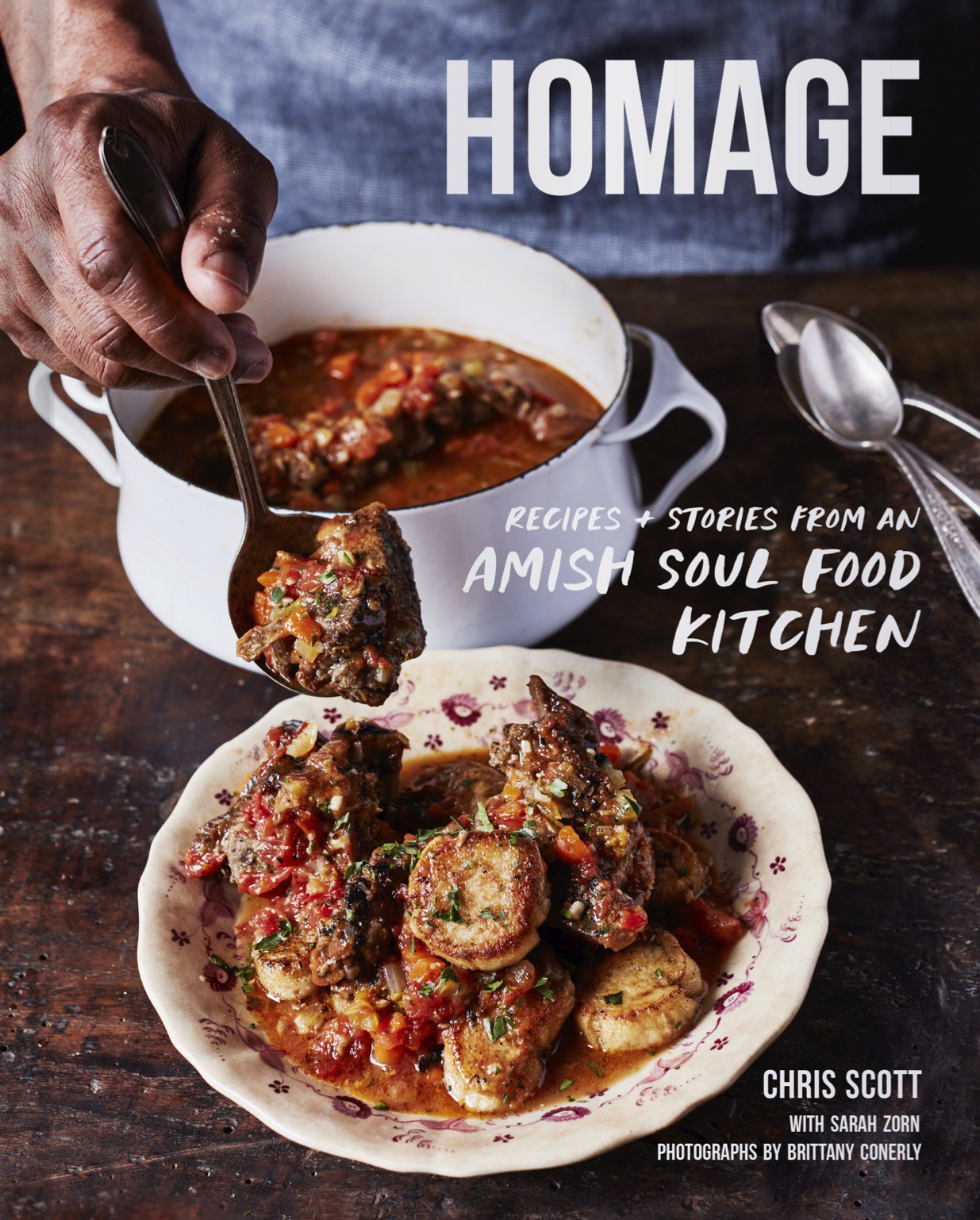Soul food is regional. There are the tidewater flavors of coastal Virginia, the African origins of Gullah Geechee cuisine, the Creole presence in Mississippi and the Florida panhandle, the barbecue scene in Texas and the Dutch and German influences when you head north. Chris Scott, who appeared on season 15 of Top Chef, discusses the vinegars, sugars, and bright flavors of Amish soul food, which you see in dishes like chow chow. The sweet-and-sour relish can be made with okra, beans, corn, green tomatoes, cabbages, bell peppers... anything you have at the end of summer's harvest. It's the perfect accompaniment to scrapple, a mashup of pork scraps and trimmings. You'll find them all in his new cookbook, “Homage: Recipes and Stories from an Amish Soul Food Kitchen.”
CRISPY “CITY MOUSE” SCRAPPLE
Serves 12 to 16
Sit down to a slice of Nana’s scrapple, and you’d end up picking bits of bone out of your teeth. But that was just part of the game. She used ears, snout, cheek, liver, and heart in her scrapple, thickened it with cornmeal, and pan-seared it so it stayed nice and gooey inside.
I’ll admit to using fewer pig parts than Nana would, so consider this my “city mouse” version of a very country dish. I start with a savory cut, like shoulder or butt, and add in some ham hocks for smokiness. The fine folks of Pennsylvania eat scrapple mostly for breakfast, seared and served with an egg, some ketchup, or syrup. I’ve found that with just a tiny bit of chef-like tinkering, it’s yummy (and dare I say, even sort of elegant) all day, e’ery day! Note: This dish must be started a day ahead.
Ingredients
- 1 lb [455 g] pork butt, cut into large chunks
- ¼ cup [60 ml] vegetable oil
- Kosher salt and freshly cracked black pepper
- 2 smoked ham hocks
- 2 bunches fresh sage
- 2 celery stalks, halved
- 1 onion, quartered
- 1 carrot, peeled and halved lengthwise
- 1/3 cup [105 g] molasses
- 1 tsp ground allspice
- 1 tsp ground cloves
- 1 tsp freshly cracked black pepper
- 5 cups [700 g] cornmeal
- 1 cup [140 g] buckwheat flour
- White flour, for dredging
- Butter or bacon fat, for frying
- Okra Chow-Chow (page 51), Pimento Cheese Spoonbread (page 206), or poached eggs (see sidebar, page 78), for serving
Instructions
- Preheat the oven to 400°F [200°C].
- Place the pork butt in a large baking dish. Coat evenly with the vegetable oil and season with salt and pepper. Roast until caramelized, about 35 minutes.
- Add the caramelized pork to a large stockpot, along with the ham hocks, sage, celery, onion, carrot, molasses, allspice, cloves, cracked pepper, and cold water (12 cups [2.8 L] or enough to cover the ingredients). Cover the pot and bring to a boil over high heat. Lower the heat to a simmer and cook until fork-tender, 3 hours more.
- Set a colander over a large pot or heatproof bowl. Drain the cooked solids through it and reserve 12 cups [2.8 L] of the liquid (if you have less than 12 cups, add some salted water to make up the difference).
- Discard the vegetables and finely chop or purée the meat. Add the meat and the 12 cups [2.8 L] of liquid to a large pot and bring to a boil. Lower the heat to medium and slowly whisk in the cornmeal and buckwheat flour. Once it binds to become a tight mush, transfer to an ungreased, 9 by 13 in [23 by 33 cm] baking dish. Smooth the top and refrigerate for 24 hours until completely set.
- After 24 hours, remove the scrapple from the baking dish and slice into 2 by ¼ in [5 cm by 6 mm] squares. At this point, you can wrap any extra squares in ziplock bags, freeze, and then defrost once ready to use.
- Dredge slices of scrapple in the flour. Add the butter or bacon fat to a cast-iron or heavy-bottomed pan, heat over medium heat, and add the scrapple squares in a single layer, working in batches if needed. When golden brown and crispy (about 4 minutes per side), remove from the pan and pat dry with paper towels. Serve with your favorite accompaniments, such as Okra Chow-Chow or Pimento Cheese Spoonbread and poached eggs.
Reprinted from Homage by Chris Scott with Sarah Zorn, with permission from Chronicle Books, 2022. Photographs © Brittany Conerly.

Scott considers his audience when preparing his grandmother’s scrapple but dives into using the spleen and heart for the more adventurous eater. Photo by Brittany Conerly.

Chef Chris Scott draws connections of Black people fleeing to the northeast and Amish making their way to the U.S. to avoid religious persecution. Photo by Clay Williams.

Soul food isn't limited to the South. In "Homage: Recipes and Stories from an Amish Soul Food Kitchen," chef Chris Scott explores the intersection of Dutch, German and African culinary influences in the United States. Photo courtesy of Chronicle Books.
